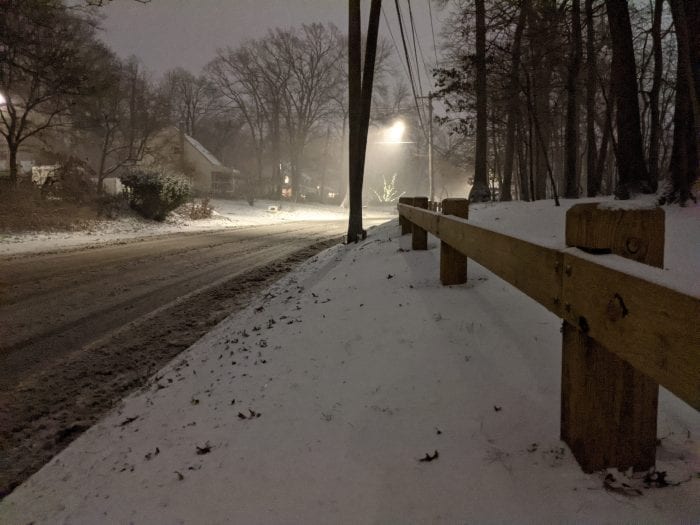PSEG Long Island is prepared for the strong winds and heavy snow that may potentially hit the service area Friday night through Saturday.
Depending on how the storm tracks, snow accumulations could range between 6 and 20 inches. The forecast also predicts strong winds with the possibility of peak gusts of up to 65 mph – conditions that could break tree limbs, pull down wires and cause outages.
“PSEG Long Island continues to monitor this nor’easter, and we are prepared to respond,” said Michael Sullivan, vice president of Transmission & Distribution at PSEG Long Island. “We have performed system and logistic checks, and have additional personnel at the ready. However the storm tracks, our crews will safely restore any outages as quickly as these wintry conditions allow.”
More than 900 line workers, tree trimmers, surveyors and other utility personnel will be dedicated to the restoration on Saturday.
During this storm, PSEG Long Island may use an enhancement to its outage communications process to increase the accuracy of estimated times of restoration (ETRs). With this enhancement, customers contacting the Call Center early in the storm may receive an “Assessing Conditions” message rather than an ETR message. This will allow crews to assess storm impact first to provide more precise ETRs. For more information about this new process, visit https://www.psegliny.com/outages/estimatedrestorationtimes.
COVID-19-related storm processes remain in place to ensure the health and safety of employees and the public. To that end, we ask that customers remain in their homes when crews are working nearby. If customers must speak with our crews, we ask them to practice responsible “physical distancing” and remain at least 6 feet away. For more information about how PSEG Long Island continues to live up to its commitment to safety during the pandemic, please visit www.psegliny.com/covid19.
Customers are asked to note the important storm safety tips below and to visit https://www.psegliny.com/safetyandreliability/stormsafety for additional storm preparation information.
Customer Safety:
- Downed wires should always be considered “live.” Please stay away from them, and do not drive over or stand near them. It is best to maintain a distance of at least 30 feet from a downed power line. To report a downed wire, call PSEG Long Island’s 24-hour electric service number at 800-490-0075 or call 911.
- Electric current passes easily through water. If you encounter a pool of slush or standing water, stop, back up and choose another path. And remember, downed lines are not easy to see in snow.
- Never use a generator, pressure washer, or any gasoline-powered engine inside your home, basement, or garage or less than 20 feet from any window, door, or vent. Use an extension cord that is more than 20 feet long to keep the generator at a safe distance.
Stay connected:
- Download the PSEG Long Island mobile app to report outages and receive information on restoration times, crew locations and more.
- Report an outage and receive status updates by texting OUT to PSEGLI (773454). You can also report your outage through our app, our website at www.psegliny.com/outages or with your voice using the Amazon Alexa or Google Assistant app on your smartphone.
- To report an outage or downed wire, call PSEG Long Island’s 24-hour Electric Service number at 800-490-0075.
- Follow PSEG Long Island on Facebook and Twitter to report an outage and for updates before, during and after the storm.
- Visit PSEG Long Island’s MyPower map for the latest in outage info, restoration times and crew locations across Long Island and the Rockaways at https://mypowermap.psegliny.com/
# # #
PSEG Long Island
PSEG Long Island operates the Long Island Power Authority’s transmission and distribution system under a long-term contract. PSEG Long Island is a subsidiary of Public Service Enterprise Group Inc. (PSEG) (NYSE:PEG), a publicly traded diversified energy company.















